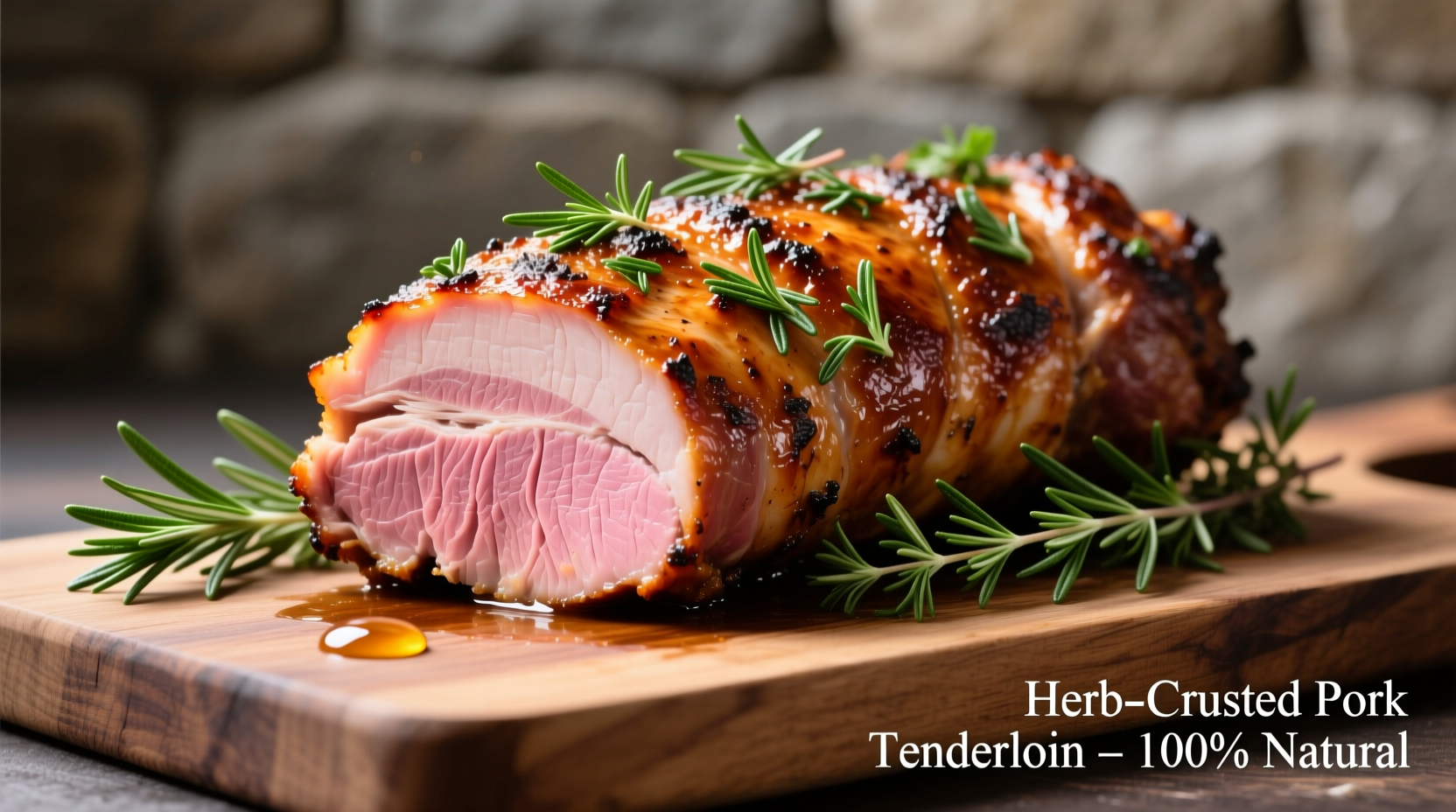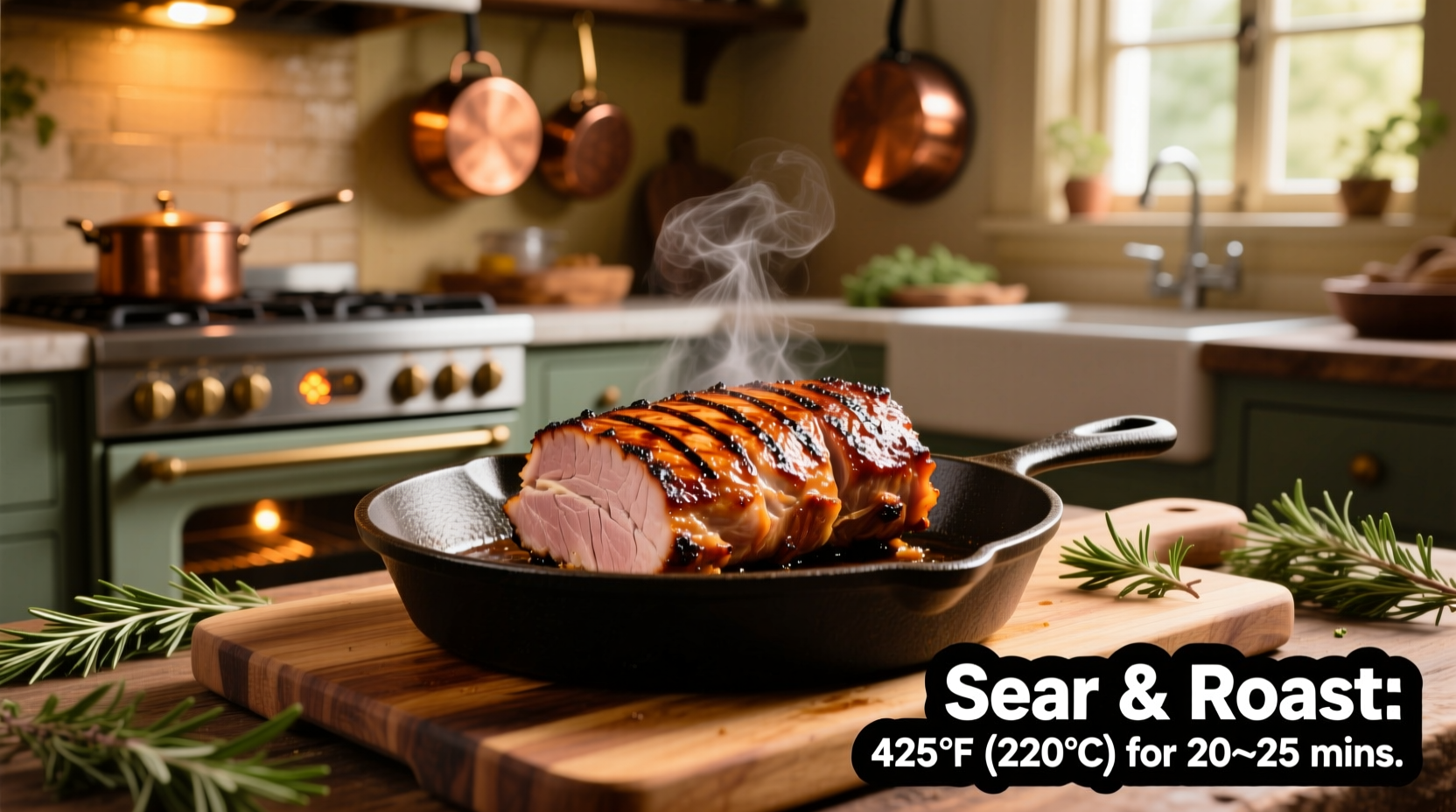Nothing beats the simplicity of oven-roasted pork tenderloin for a quick yet impressive weeknight dinner. This lean cut cooks faster than other pork portions, making it perfect for busy schedules while still delivering restaurant-quality results. Follow this science-backed method to avoid dry, overcooked meat and achieve perfect texture every time.
Why This Oven Method Works Best
Pork tenderloin's leanness makes it prone to drying out if mishandled. Our tested approach combines high-heat searing with precise temperature monitoring to create a flavorful crust while preserving juiciness. The USDA Food Safety and Inspection Service confirms that cooking pork to 145°F with a 3-minute rest time ensures both safety and optimal texture, eliminating previous recommendations for higher temperatures that often resulted in dry meat.
| Cooking Stage | Temperature | Time | Visual Cues |
|---|---|---|---|
| Preheat Oven | 425°F (220°C) | 20 min | Oven indicator light off |
| Searing | 425°F (220°C) | 2-3 min/side | Deep golden brown crust |
| Roasting | 425°F (220°C) | 15-20 min | Meat thermometer reading |
| Resting | Room temp | 5-10 min | Juices redistribute |
What You'll Need for Success
Choosing your pork: Select a 1-1.5 pound tenderloin with even thickness and minimal fat. The National Pork Board recommends looking for pale pink meat with firm texture and moderate marbling. Avoid pieces with excessive liquid in the package, which indicates potential quality issues.
Essential tools:
- Oven-safe skillet (cast iron or stainless steel)
- Digital meat thermometer (critical for accuracy)
- Sharp chef's knife for trimming
- Aluminum foil for resting

Step-by-Step Cooking Process
Preparation Phase (5 minutes)
Remove silver skin using a sharp knife—this tough membrane won't tenderize during cooking. Pat the meat completely dry with paper towels; moisture is the enemy of proper browning. Season generously with kosher salt (1½ tsp per pound) at least 40 minutes before cooking to allow penetration, or immediately before if short on time.
Searing Phase (5 minutes)
Heat 1 tablespoon oil in your oven-safe skillet over medium-high heat until shimmering. Place pork in skillet away from you to prevent oil splatter. Sear undisturbed for 2-3 minutes until deep golden brown crust forms. Rotate and sear all sides, including ends. This Maillard reaction creates complex flavors that oven cooking alone cannot achieve.
Roasting Phase (15-20 minutes)
Transfer skillet directly to preheated oven. Roast until internal temperature reaches 140°F (60°C)—it will continue rising to 145°F during resting. Cooking time varies based on thickness: a 1-inch thick tenderloin takes approximately 15 minutes, while thicker cuts may need 20-25 minutes. Never estimate doneness by time alone—rely on your thermometer for perfect results.
Resting Phase (Critical 5-10 minutes)
Transfer pork to cutting board, tent loosely with foil, and rest. This allows juices to redistribute throughout the meat. Cutting too soon releases precious moisture onto the board instead of staying in the meat. The temperature will rise 5°F during this period, reaching the USDA-recommended 145°F for safe consumption.
Troubleshooting Common Issues
Dry results: Most often caused by overcooking. Use a thermometer and remove at 140°F. Consider brining for 1-2 hours in 4 cups water with ¼ cup salt and ¼ cup sugar for extra insurance.
Uneven cooking: Tapered tenderloins often have one end thicker than the other. Fold the thinner end under itself or use the 'taco method' by placing it inside a thicker portion to create more uniform thickness.
Lack of flavor: Boost seasoning with aromatics. During the last 5 minutes of roasting, add smashed garlic cloves, fresh rosemary, and lemon slices to the skillet, basting occasionally for infused flavor.
Flavor Variations and Serving Suggestions
Classic herb crust: Mix 2 tbsp olive oil with 1 tbsp each chopped rosemary, thyme, and 2 minced garlic cloves. Rub over pork before searing.
Maple-Dijon glaze: Whisk 2 tbsp Dijon mustard with 2 tbsp pure maple syrup and 1 minced shallot. Brush on during last 10 minutes of roasting.
Perfect pairings: Serve sliced pork with roasted vegetables like asparagus or Brussels sprouts. A simple pan sauce made from deglazing the skillet with 1 cup chicken broth, 2 tbsp butter, and fresh herbs complements beautifully. For complete meal planning, the American Heart Association recommends pairing lean proteins like pork with at least two vegetable servings.
Storage and Reheating Guidelines
Cool cooked pork within 2 hours of preparation. Store in airtight container for up to 3-4 days in the refrigerator. For best reheating results, place slices in a covered dish with 2 tablespoons broth or water, cover with foil, and warm at 275°F until internal temperature reaches 140°F. Avoid microwaving which often dries out the meat. For longer storage, slice and freeze in portion-sized containers for up to 3 months.











 浙公网安备
33010002000092号
浙公网安备
33010002000092号 浙B2-20120091-4
浙B2-20120091-4